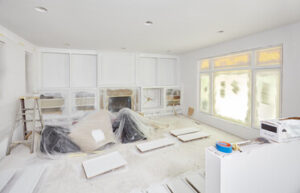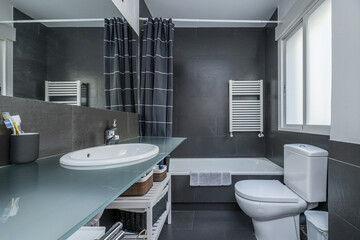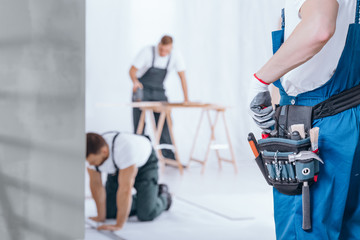Cabinet refinishing can be a great way to update your kitchen and breathe new life into old cabinets without spending an arm and a leg. However, there are some things you should know before you begin.

It’s important to keep in mind that lighting plays a major role in how paint colors and finishes appear. Viewing samples under different lighting conditions is a good idea. Contact San Jose Cabinet Refinishing for professional help.
Whether tackling cabinet refinishing as an amateur DIY project or working with professionals, understanding each step of this transformative process will enrich your renovation experience and ensure a flawless final result. From the broad strokes of style and color to the intricate details of knobs and handles, each stage provides an opportunity to craft a kitchen that is uniquely yours, telling a new chapter in your home’s story.
Before beginning the refinishing process, thoroughly clean your cabinets with a mild cleaner or degreaser and sand them down to remove any existing finish or paint. This will help prepare the surfaces for the next step, which is to prime and then paint. During this time, it’s also a good idea to patch any visible cracks or holes, and then lightly sand and prime again.
If you decide to refinish your cabinets, it’s important to choose the right type of primer. There are a variety of primers on the market, including water-based and oil-based products. Before choosing a product, research the best options for your project and make sure it’s safe to use in your kitchen. A quality primer will also improve adhesion and extend the life of your cabinet paint.
After priming, it’s a good idea to scuff sand the cabinets again, using medium-grit sanding sponges or 180-grit sandpaper on a random orbital sander. This will improve paint adhesion and help create a smooth, even finish. It’s also a great time to caulk any gaps where the cabinets meet walls or crown molding.
At this point, you’re ready to start painting. It’s important to allow sufficient drying time between coats. NHance recommends at least 24 hours between each coat of paint. A high-quality latex or oil-based primer should be used depending on your cabinet material (i.e. wood or MDF). If you’re unsure which type of primer to use, ask your contractor. They will be able to guide you based on your cabinet materials and the style of kitchen you want to achieve.
Stripping
Cabinet refinishing is a great option for homeowners looking to update the look of their kitchen without spending the money on new cabinets. This process involves sanding and chemically stripping the existing finish to reveal the wood underneath, then staining or painting the cabinets a new color. It can be done on cabinet doors, drawer fronts, and cabinets boxes — whether they are made from solid wood or engineered wood like medium-density fiberboard (MDF).
When refinishing cabinets, it’s important to start with a clean slate. This means removing all hardware and thoroughly cleaning the cabinets to remove any grease or dirt that may interfere with the finish removal process. Next, if necessary, repairs can be made to the cabinet boxes or door frames to fix cracks, chips, or dents.
Before starting the stripping process, it’s important to test whether the paint on the cabinets is oil-based or latex. This can be done by applying a small amount of paint stripper to the surface and rubbing it with a cloth or cotton ball moistened with denatured alcohol. If the surface turns yellow, it’s an oil-based finish; if it doesn’t turn yellow, it’s most likely latex.
Once the old finish is removed, a light sanding is usually required to prepare the cabinet for the new stain or paint. This can be done with an electric sander or by hand with 120- to 150-grit sandpaper. It’s important to sand with the grain so that any marks in the wood are removed.
At this point, it’s also important to decide whether or not to stain the cabinetry a darker color. This is something that many homeowners are hesitant to do, but it can be an excellent way to add a touch of elegance and make the room feel more luxurious. If you decide to stain, it’s a good idea to do a few coats of the dark color to ensure that the stain is even throughout the cabinetry.
The refinishing and staining process isn’t for everyone, so it’s important to consider the benefits of hiring a professional. They can help you save time, money and frustration by doing the work efficiently and effectively. They will also be able to provide you with guaranteed results that you can be proud of.
Repairing
Cabinet refinishing is the less-expensive alternative to refacing or replacing your cabinets. The refinishing process includes sanding and applying a new coat of stain or paint to your existing cabinets, transforming them into something fresh and new without the cost of a full replacement.
The most common choice for a cabinet refinishing project is a solid color acrylic or water-based paint that’s specifically formulated for kitchen and bathroom surfaces. We use a high-quality Sherwin-Williams product for our finishes that’s formulated for durability, resisting chipping and scratching in high-traffic areas. It also has a low VOC, meaning it doesn’t emit strong odors during the refinishing process or require long periods of downtime.
Before applying your new finish, it’s important to repair any cracks or chips in the wood. You can use a wood filler or caulk to patch these areas and then sand the cabinet to prepare it for the new stain or paint.
Once the damaged surface is repaired, you’ll apply a primer and then multiple coats of your chosen stain or paint. It’s best to let the primer dry between each coat to prevent any bubbles or cracking, and you should sand after each coat to ensure a smooth and even result. Once the paint is fully dry, you can install your cabinets again and enjoy your new look!
Both cabinet refacing and refinishing are great options for homeowners who want to modernize their kitchen. While refinishing is limited by the current design of your cabinet doors, refacing offers an endless amount of door and style options that can transform your entire kitchen.
If you’re considering either option, be sure to get the help of a professional. They will have the experience and expertise to create a stunning new look for your home that lasts. And they can cut your renovation time in half by using a signature finishing process that’s designed to achieve flawless, like-new results every time.
Painting
Cabinet refinishing is a great option for updating your kitchen without spending the money required for a full replacement. However, even the best paint jobs can only take so much wear and tear in a busy kitchen. Within a few years, scuff marks and chipping will become obvious, especially around handles. At that point, you may be ready to consider a more permanent update.
If you choose to refinish cabinets rather than replace them, the first step will be sanding and priming. This will give the new coat of paint a solid base and improve how well it adheres to the existing surface. Before applying primer, be sure to clean the cabinets thoroughly with a degreaser. This will remove any food particles, grease, and oil that have accumulated on the surfaces over time. Once the wood is dry, sand it lightly using a foam sanding block or 180-grit sandpaper on a random orbital sander to create a rough texture and improve the grip of the primer and subsequent coats of paint.
Before you apply any primer or paint, it’s important to determine whether your cabinets are painted with an oil-based or water-based finish. Rubbing alcohol and a cotton ball will help you test this by dipping the cotton ball or cloth in the rubbing alcohol and wiping a small, inconspicuous area of the painted surface. If the paint comes off, it’s likely oil-based; if it doesn’t, you’re working with a water-based product.
Once the sanding and priming process is complete, it’s time to start painting! For a professional-looking result, it’s important to follow the paint manufacturer’s instructions regarding dry times between coats. For example, some products require 24 hours or more for proper curing. During this time, it’s also important to keep the cabinets clear of any furniture or appliances so they can properly dry.
While the refinishing process isn’t as involved as refacing or replacing cabinets, it can still be a messy and time-consuming project. By taking the time to prepare the cabinet surface and properly repair any damage, you can ensure that your finished product will last for years to come.



